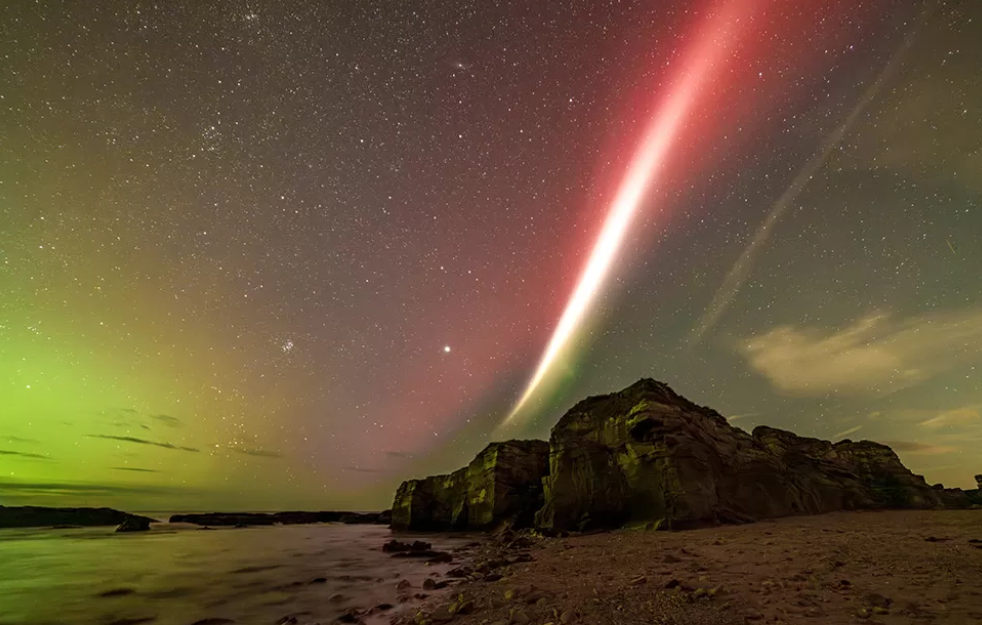To everyone named Steve, you were the celestial stars of the show on Sunday night as a rare sky phenomenon known as “Steve” made a dazzling return to illuminate the skies over the north-east of England and Scotland.
Steve, a thin ribbon of purple light, is a relatively new scientific discovery that is often associated with the more famous aurora borealis, or Northern Lights, which also graced parts of the UK on the same night.
While Steve has made occasional appearances in the past, it remains a shy and rare sight in the UK. It was last reported in March, and sightings in the Shetland Islands date back to 2021.
This ethereal spectacle has intrigued scientists for decades but didn’t receive its distinctive name until 2016, following a US citizen science project supported by Nasa and the National Science Foundation. The inspiration behind the name “Steve” comes from a scene in the animated movie “Over the Hedge,” in which a group of animals encounters an awe-inspiring, unidentified phenomenon—a big garden hedge. They decide to call it “Steve” to make it less intimidating.
Scientists later turned “Steve” into an acronym, standing for “Strong Thermal Emission Velocity Enhancement.”
Steve’s formation and characteristics have been the subject of scientific curiosity. It is known to be related to the aurora but appears as a ribbon of light rather than the typical oval shape of the auroras. It lasts for 20 minutes to an hour before disappearing.
Scientists suggest that Steve is composed of a fast-moving stream of extremely hot particles called a subauroral ion drift (SAID). Its unpredictability and short duration make ground observations rare, but it has been reported in various locations, including the UK, Canada, northern US states, and New Zealand.
While Steve took center stage, the Northern Lights, or aurora borealis, also graced the UK with its vibrant colors on Sunday night. The spectacle was made possible by a geomagnetic storm caused by a strong solar wind, sending charged particles toward Earth. These particles interacted with oxygen and nitrogen in the atmosphere, creating the stunning greens, purples, and reds associated with the Northern Lights. Normally confined to high latitudes, the strong solar wind made the Northern Lights visible across the entire UK.
So, for those named Steve or anyone else who marveled at the night sky on Sunday, it was a rare and extraordinary celestial double feature that left a lasting impression.
